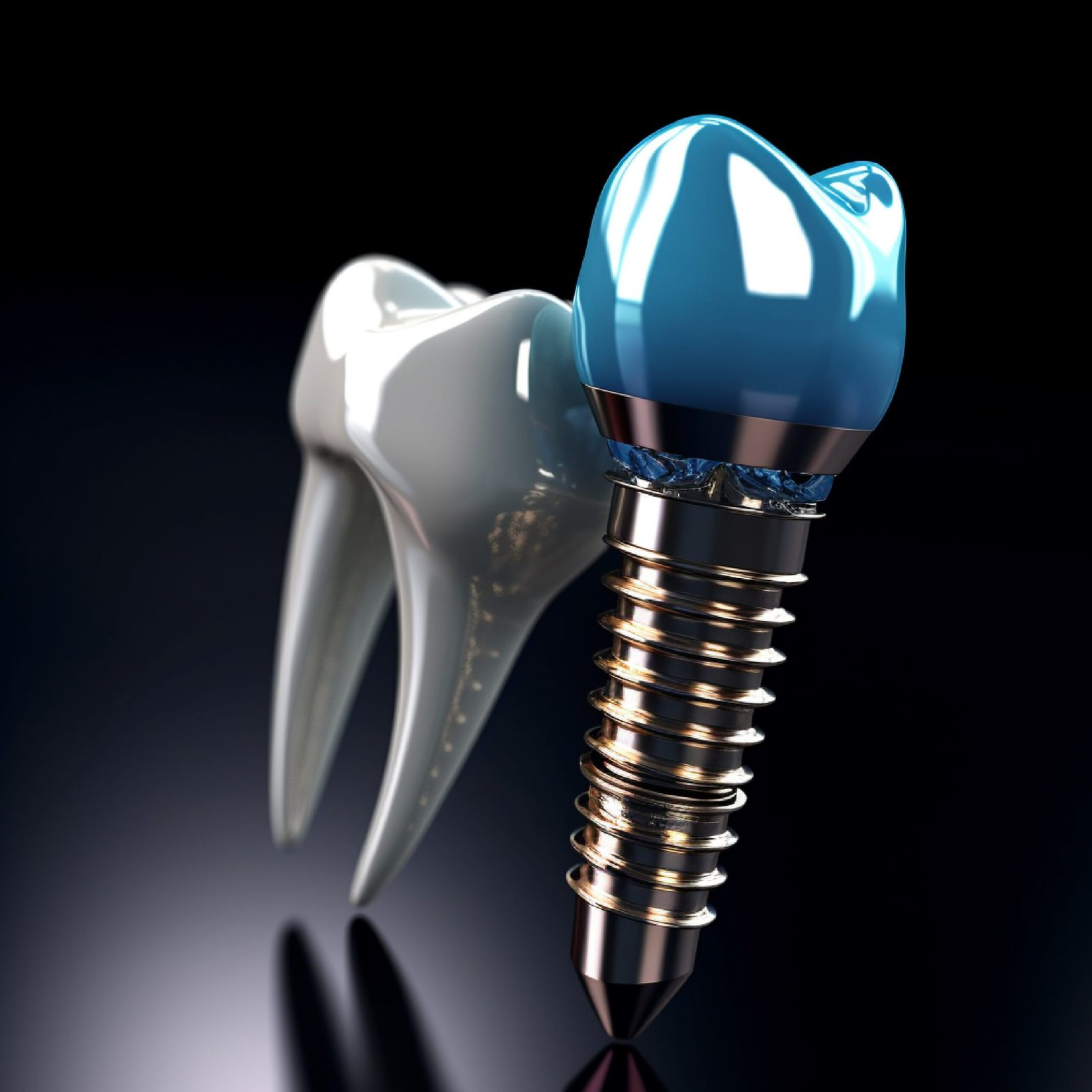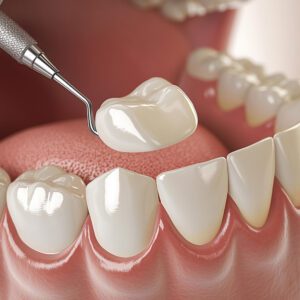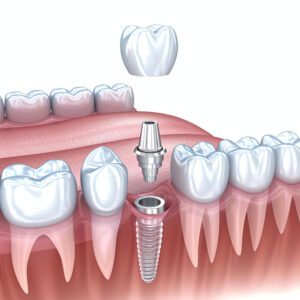Introduction to All-on-4 Dental Implants
All-on-4 dental implants represent a significant advancement in restorative dentistry, particularly for patients experiencing extensive tooth loss. This innovative technique is designed to support a full arch of prosthetic teeth using only four strategically placed implants. The main purpose of All-on-4 implants is to provide a stable and durable solution for individuals who require multiple teeth replacement, ultimately aiming to restore both functionality and aesthetics to the patient’s smile.
The advantages of All-on-4 implants over traditional dentures are numerous. First and foremost, they offer greater stability, as the implants are anchored directly into the jawbone. This anchorage prevents the common challenges associated with removable dentures, such as slippage, irritation, or mechanical failure. Furthermore, since the implants promote bone preservation, All-on-4 treatments enable patients to maintain their facial structure and prevent the bone loss that typically accompanies tooth extraction. This aspect is crucial for long-term oral health and enhances the overall quality of life for individuals affected by tooth loss.
Another important benefit of All-on-4 dental implants is the significantly reduced treatment time. In many cases, patients can leave the dental office with a new set of temporary teeth the same day the implants are placed. This immediate function is an appealing factor for many patients, allowing them to transition back to their daily activities without prolonged interruption. Overall, the All-on-4 dental implant technique has revolutionized the approach to tooth replacement, providing enhanced comfort, functionality, and aesthetic appeal compared to conventional dentures.
Why Choose All-on-4 Over Traditional Methods
The decision to choose All-on-4 dental implants over traditional methods such as dentures or conventional implants necessitates consideration of multiple factors, including cost-effectiveness, healing time, and stability. All-on-4 implants, which consist of four strategically placed titanium posts, offer significant advantages that appeal to many patients seeking restorative dental solutions.
One of the primary benefits of All-on-4 implants is their cost-effectiveness compared to traditional implants. Conventional dental implant procedures typically require one implant for each missing tooth, which not only increases the number of surgeries but also elevates materials and labor costs. In contrast, All-on-4 provides a solution for an entire arch of teeth with only four implants, allowing both lowered expenses and reduced treatment sessions. This affordability makes it an attainable option for patients who may otherwise hesitate to pursue restoration.
Another compelling reason to consider All-on-4 is the reduced healing time associated with the procedure. Traditional implants often necessitate a lengthy healing period where patients must wait for osseointegration—the process in which the implant fuses with the jawbone. The All-on-4 method allows for immediate loading of the prosthesis, meaning patients can leave the clinic with a functional set of teeth on the same day. This convenience significantly enhances the overall experience for patients who may be anxious about prolonged recovery times.
Furthermore, stability is a crucial factor that distinguishes All-on-4 from traditional dentures. Dentures can slip, cause discomfort, and require frequent adjustments, while All-on-4 implants provide a fixed, secure solution that closely mimics the feel and function of natural teeth. The angulated placement of the implants also promotes optimal support, enhancing the retention of the prosthetic teeth.
All of these aspects contribute to a compelling case for patients considering dental restoration, making All-on-4 a modern, efficient alternative that aligns with the needs of those seeking lasting solutions for tooth loss.
Stages of the All-on-4 Procedure
The All-on-4 dental implant procedure is designed to provide patients with a complete arch of replacement teeth secured by just four dental implants. This innovative technique is characterized by its streamlined process, which can be broken down into several key stages, each critical to the overall success of the treatment.
The first stage involves an initial consultation with the dental professional. During this visit, the dentist will evaluate the patient’s oral health, discuss medical history, and assess the suitability of All-on-4 implants for their specific needs. Diagnostic imaging, such as X-rays or 3D scans, may be performed to gather detailed information about the bone structure, enabling accurate treatment planning.
The next stage is treatment planning, where the dentist will create a tailored plan based on the data obtained during the consultation. Considerations will include the location and angle of the implants and the type of prosthesis to be used. This phase is crucial as it sets the foundation for the surgical procedure and ensures that the dental implants are placed in optimal positions for stability and support.
After the treatment plan is finalized, the patient will undergo the implant placement stage. The dentist will surgically insert the four implants into the jawbone, often using minimally invasive techniques to reduce recovery time and discomfort. Once the implants are in place, temporary prosthetics may be attached, allowing the patient to leave the office with functional teeth while the implants integrate with the bone.
Following the implant placement, the prosthesis fitting stage takes place after a healing period, which typically lasts a few months. During this appointment, the final prosthetic arch is designed and fitted to ensure perfect alignment and comfort. The final stage encompasses follow-up care, where the dental team monitors the healing process, making adjustments as necessary, and providing guidance on maintenance and oral hygiene practices to ensure the longevity of the All-on-4 implants.
Initial Consultation and Diagnostic Imaging
The journey towards acquiring All-on-4 dental implants begins with an initial consultation, an essential step that lays the groundwork for successful treatment. During this visit, patients can expect a comprehensive evaluation that combines a thorough examination of their dental and medical histories. This assessment allows the dental team to understand the patient’s requirements and any potential underlying health issues that might affect the procedure. It is crucial to discuss any allergies, medications, or past dental experiences that may have a bearing on the implant process.
A detailed oral examination follows the medical history discussion. The dentist will inspect the condition of the gums, remaining teeth, and underlying bone structure, ensuring that these components are conducive to the All-on-4 dental implants. Assessing bone density is particularly vital, as insufficient bone material may necessitate additional procedures, such as bone grafting. The dentist also emphasizes the importance of oral hygiene practices, which will play a critical role in the overall success of the dental implants.
In conjunction with the physical evaluation, advanced imaging techniques, particularly 3D scans, significantly enhance the diagnostic process. These scans provide a comprehensive view of the oral cavity, allowing the dental professionals to formulate precise treatment plans tailored to each patient’s unique anatomy. 3D imaging facilitates the identification of vital structures, such as nerves and sinuses, enabling careful planning to minimize complications. It also aids in visualizing the final outcome, fostering clear communication between the patient and the dentist regarding expectations.
In essence, the initial consultation and diagnostic imaging serve as crucial phases in the All-on-4 dental implant journey. These steps not only ensure that patients are well-informed about the procedure but also help establish a personalized treatment plan that maximizes the chances of success.
Treatment Planning: Tailoring Your Implant Solution
The initial phase of the All-on-4 dental implant procedure is treatment planning, which plays a crucial role in ensuring successful outcomes. Customized treatment plans are essential for addressing the unique needs of each patient. Dental professionals begin this process with a comprehensive assessment that involves evaluating the patient’s oral health, medical history, and the specific requirements of their dental restoration.
One of the primary considerations in this planning stage is bone density. Adequate bone structure is vital for the secure placement of implants, as they require a stable foundation. If patients have experienced bone loss due to periodontal disease or prolonged tooth loss, additional procedures such as bone grafting may be needed. Specialists utilize advanced imaging techniques, such as cone-beam computed tomography (CBCT), to obtain a detailed view of the jawbone’s condition. This information informs the approach to implant placement and helps determine the need for any preparatory treatments.
Another significant factor is the overall oral health of the patient. Conditions like gum disease must be addressed prior to implant surgery to minimize the risk of complications. Dentists may recommend thorough dental cleaning and additional treatments to ensure the gums are healthy enough to support the implants properly. Furthermore, understanding the patient’s desires and expectations regarding functionality and aesthetics is vital. During the treatment planning consultation, specialists engage in discussions regarding the desired outcomes, ensuring alignment with the patient’s goals.
In summary, the treatment planning phase for All-on-4 dental implants encompasses a holistic evaluation of the patient’s bone density, oral health, and expectations. By tailoring each treatment plan to the individual, dental professionals can enhance the likelihood of achieving successful and satisfying results in implant procedures.
The Implant Placement Procedure
The implant placement phase of the All-on-4 dental implant procedure is a critical component that demands careful planning and execution. It typically begins with a thorough assessment of the patient’s oral health, including imaging techniques like CT scans, to determine the best placement points for the implants in the jawbone. The All-on-4 technique is designed to minimize the need for bone grafting, making it particularly beneficial for patients with limited bone density.
Prior to the surgical intervention, anesthesia plays a crucial role in ensuring the patient’s comfort throughout the process. A combination of local anesthesia, sedation, or general anesthesia may be used, depending on the patient’s level of anxiety, preference, and the complexity of the procedure. This approach ensures that patients are relaxed and not experiencing pain during the surgical placement of the implants.
Postoperatively, patients are given detailed instructions on care and recovery. This includes guidelines on managing swelling, pain control, and the importance of avoiding strenuous activities for a specified duration. Patients may also be advised to follow a soft-food diet initially to facilitate healing. It is expected that some swelling or discomfort may occur, but these symptoms can typically be managed with prescribed medications.
Overall, the surgical stage of the All-on-4 procedure is a pivotal moment in the journey toward restoring a patient’s smile and chewing function. With proper care and adherence to follow-up appointments, patients can expect favorable outcomes and a significant enhancement in their quality of life.
Prosthesis Fitting: Achieving the Perfect Smile
The fitting of the prosthetic bridge is a critical stage in the All-on-4 dental implant process. This procedure involves securely attaching a fixed prosthesis to the dental implants that have been strategically placed in the jawbone. The primary objectives during this stage are to ensure both aesthetics and functionality, allowing the patient to regain a natural-looking smile while also restoring the ability to eat and speak comfortably.
Initially, the dentist or oral surgeon will verify the positioning of the implants within the patient’s jaw. Using advanced imaging techniques and intraoral scanners, they can assess the alignment of the implants and their corresponding attachments. This meticulous evaluation ensures that the fixed prosthetic bridge will fit seamlessly and be ideally aligned with the patient’s bite. Even minute discrepancies in alignment can lead to discomfort, thus, any necessary adjustments will be made to achieve the perfect fit.
Once the initial assessment is complete, the prosthetic bridge is placed over the dental implants. The dentist will check for any immediate signs of discomfort or misalignment. It is crucial that the prosthesis fits snugly against the gums without causing pressure points or irritation. If any adjustments are necessary, they may include fine-tuning the prosthetic’s contour or checking the occlusion to ensure an even bite.
Throughout the fitting process, the dentist promotes open communication with the patient, encouraging feedback about comfort levels and aesthetics. The ultimate goal is not only the restoration of function but also achieving a smile that aligns with the patient’s expectations and facial appearance. With patience and precise calibration, the fitting of the prosthesis is finalized, marking a significant milestone in the journey towards achieving a beautiful and functional smile.
Post-Procedure Care and Maintenance
After the completion of the All-on-4 dental implant procedure, proper care and maintenance are crucial for ensuring the longevity and success of the implants. Patients should prioritize oral hygiene practices to keep the mouth clean and infection-free. Regular brushing with a soft-bristle toothbrush is recommended, focusing on both the implants and the natural teeth. Flossing is also essential, as it removes food particles and plaque from areas that brushes cannot reach. Patients may also consider using an antimicrobial mouthwash to further enhance oral hygiene.
Additionally, scheduling regular check-ups with the dental professional is vital. These appointments allow for monitoring of the implants, assessing the health of the surrounding gum tissue, and making adjustments if necessary. Ensuring timely visits creates an opportunity for early detection of any potential issues that may arise.
Post-operative discomfort is common, and managing it effectively contributes to a smoother recovery. Dentists often recommend over-the-counter pain relief medication or prescribed medication to alleviate any discomfort in the initial days following surgery. It’s advisable to follow the prescribed dosages and consult the dentist if pain persists or worsens, as this could indicate complications.
Furthermore, adhering to follow-up appointments is critical for the success of the All-on-4 implants. These appointments allow the dentist to assess the integration of the implants with the jawbone, ensuring proper healing. During follow-up visits, patients can also receive guidance on advanced cleaning techniques specific to dental implants to ensure their longevity.
Maintaining a healthy diet is equally important. Soft foods are recommended for the initial healing phase, while adhering to a balanced diet promotes overall oral health. Avoiding hard, sticky, or overly hot foods can minimize discomfort and potential damage.
Real-life Success Stories and Testimonials
The All-on-4 dental implant procedure has brought significant changes to the lives of numerous patients, showcasing not only the effectiveness of the treatment but also its transformative impact on personal well-being. Many individuals share heartwarming stories about their journeys towards restored dental health and enhanced self-esteem. For instance, one patient, Sarah, recounted her experience of living with missing teeth for years, which led to a decline in her social interactions and overall happiness. Upon discovering the All-on-4 procedure, she felt hopeful and excited. After her treatment, Sarah expressed immense gratitude, stating that her new smile has allowed her to reclaim her confidence, enabling her to enjoy social gatherings without feeling self-conscious.
Similarly, James, a retired teacher, described his struggle with traditional dentures that constantly slipped and affected his ability to speak clearly. He opted for the All-on-4 dental implants, which provided him with a more stable solution. Post-procedure, James noted a remarkable improvement not just in his chewing ability but also in his communication with others. “I no longer feel awkward when speaking,” he shared, embracing the freedom his implants provided.
Another patient, Linda, highlighted how her All-on-4 experience drastically improved her quality of life. After years of avoiding certain foods due to her dental issues, she could finally enjoy a varied diet once more. This aspect significantly bolstered her nutrition and overall health. Many testimonials echo similar sentiments, emphasizing not only the physical improvements reported but also the emotional empowerment stemming from their new smiles. The All-on-4 dental implants have thus emerged as a life-changing option for many, symbolizing a restoration of more than just dental aesthetics, but of a renewed and vibrant lifestyle as well.














One Response